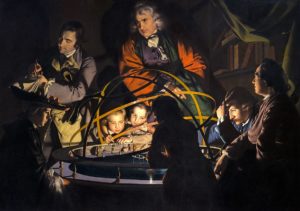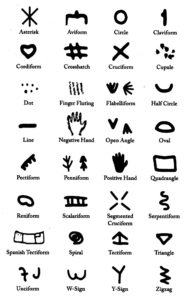 Their Daily Lives
Their Daily Lives
So far we’ve mostly examined what these people left behind. But how did they live every day, and what did they think about? These are the more important questions.
There are several things that we can say about these people:
- They spent their days more or less as people always have, up until modern times: Getting up with the sun, working during the day (children played, learned and helped their parents), cooking and eating several times, then heading toward bed when it got dark.
- These people spent a lot of time on their flat roofs. (Most of the roofs at Catalhoyuk connected, like a big park.) From this we can guess that the children often went to bed in the houses while the adults sat on the roof, talking and visiting with friends.
- Since these people certainly understood how to control and use fire, we can guess that created light in their homes at night, so the adults could stay up after their children went to bed, especially on cold or rainy nights.
- Clearly, these people knew very well how to grow crops, take care of animals, cook, make clothing, build good houses (mainly with rock, wood and plaster) and almost certainly to make music: we have images of them dancing, after all.
Taken together, we see people who are very similar to us, but with fewer and less capable machines. They certainly understood simple machines like inclined planes and levers, but perhaps not all the simple machines shown in this image:

These people almost certainly had medicines, made from plants. We’ve found opium seeds (opium is a strong pain medication) from 5,000 BC. We also know that Europeans had primitive antibiotics a few thousand years later and that people in what is now Pakistan had dentistry at this time.
We also know that these people cooked in an interesting way: They would heat clay balls (and perhaps rocks) in a fire, then put them into clay pots, where they would heat and boil the water in them. That allowed them to boil grains and meats, to make soups or stews, and so on.
These people didn’t leave behind any writing, but they almost certainly used symbols. We find tokens (little pieces of fired clay) with symbols on them back to about 8,000 BC, and there was a consistent set of symbols used in Europe during the ice age. We aren’t sure what they represented, but here they are:

And so, while we can’t precisely answer the question of what they thought about, they must have thought about the same things humans always do: How to escape fear, pain, and sorrow; how to increase safety and pleasure; how to realize their dreams; wondering about what else there is in the universe.
What we can only guess at the stories about life and the universe that they discussed among themselves and told to their children. We know that they left behind figurines (like clay dolls) of women, and we know that people descended from them told stories about a goddess named Inanna. We also know that they carefully observed the stars and the constellations, and that they wondered about the larger universe.
What their stories were, we have to guess, based upon later legends (like that of Inanna), and the customs of the people who descended from this group. Taken together, we can be fairly sure that they told stories about growing food and having children, about the stars, and about appreciating those who went before them: parents, grandparents and more distant ancestors.
